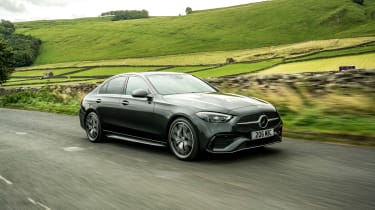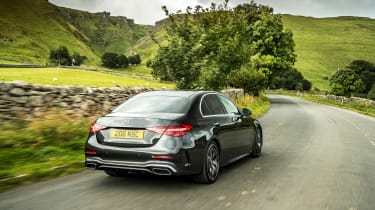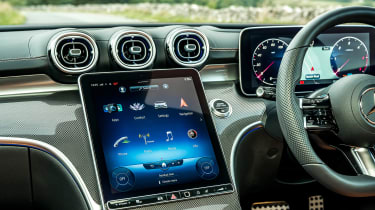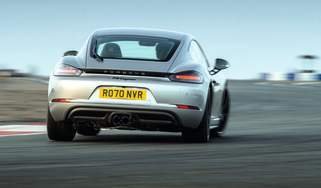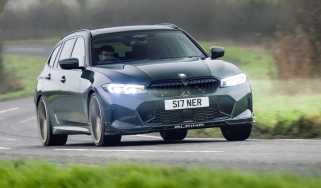Mercedes C-class review – ride and handling
Something Mercedes consistently improves with every generation, the W206 is now not just capable, but also entertaining
Typically, where ride and handling are concerned, the BMW 3-series has always had the upper hand. And while the gap has been pretty vast at points, (E46 v W203 anyone?) it hasn’t just been reduced in this latest generation, it’s almost entirely eliminated. Both have their pros and cons, and inherently the C-class does feel to have a slightly more laid-back set-up, but that’s backed up by real suppleness and a sense of calm in its suspension tuning.
As such, the ride quality is very impressive, with only the large 19-inch wheels giving a feeling of knubbliness over rough road sections. Unfortunately it’s not something that improves with speed, with shudders still finding their way into the cabin. In this respect, a 3-series’ extra lateral stability and slightly better wheel control have the edge, but the roles are reversed in regards to steering.
While the racks are light on both cars, the Mercedes has just a touch more accuracy and precision away from the straight ahead, plus a more natural build-up of resistance as speeds rise. The steering ratio is also much quicker than it used to be, and while it feels uncomfortable in larger Merc models, the C-class's impressive body control and resilient front end can carry it.
More reviews
In fact, front-end grip is extremely impressive for something with so little performance bias, the car often wiggling its tail under power without excess provocation – the C300d’s huge torque figure explains this tendency. Enter a corner and the chassis feels well balanced and agile, no doubt an advantage of specifically designing the whole front end to only cater for a four-cylinder engine.
All this bodes extremely well for future AMG models, and while these are likely to utilise all-wheel drive, the lesser C-class models are confirmation that Mercedes hasn’t held back on the chassis engineering for this latest generation.
Basics in regards to seating position and visibility are fine, although the driver’s seat could sink a little lower, while the thick steering wheel rim is also quickly closing the gap to the BMW’s in terms of annoyance, feeling a bit overstuffed and obstructive.
There’s good overall brake feel, and while the pedal is soft and comes with a sizeable dead zone at the top of its travel, once you’re into meat of it the brakes wake up and remain consistent regardless of whether the regenerative braking system is pulling energy out or not.
Overall, the C-class drives better than it needs to considering the target audience – it feels like a car that’s been in continual development with a clear mandate for the best part of four decades.

